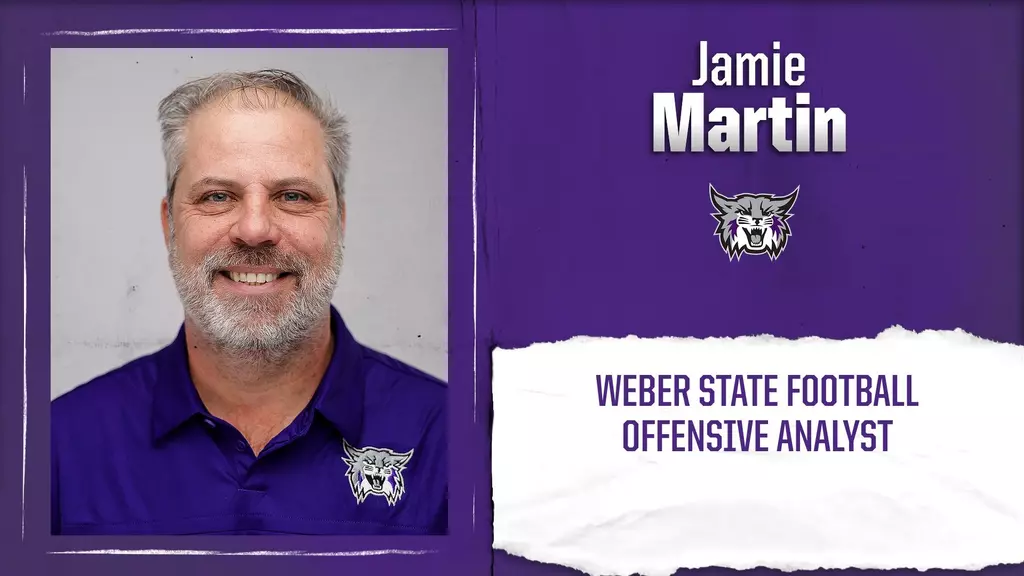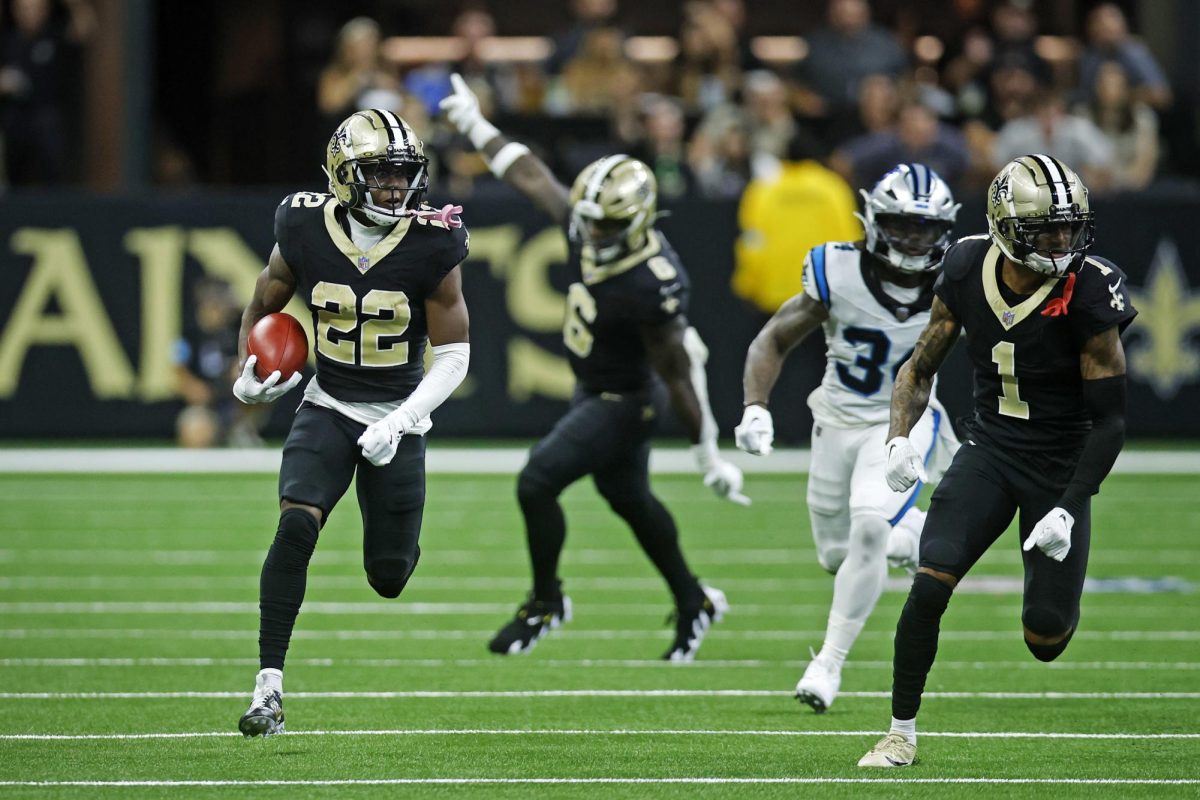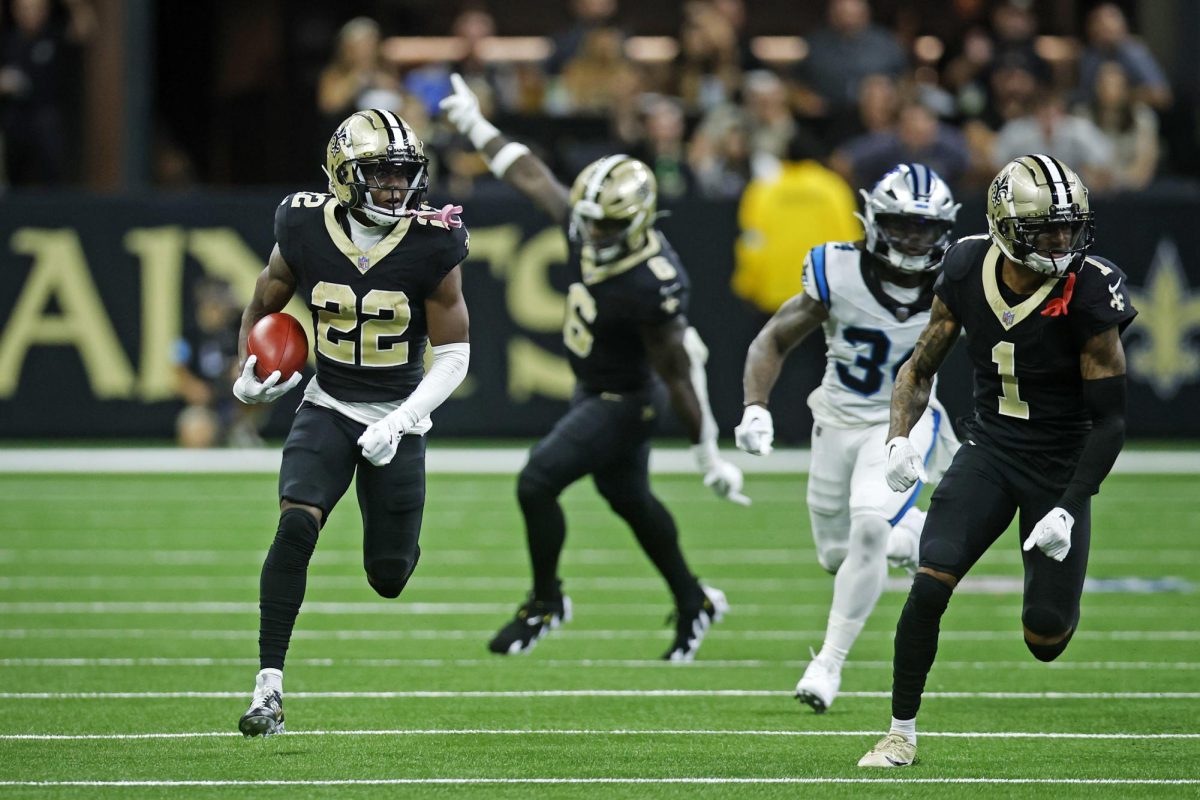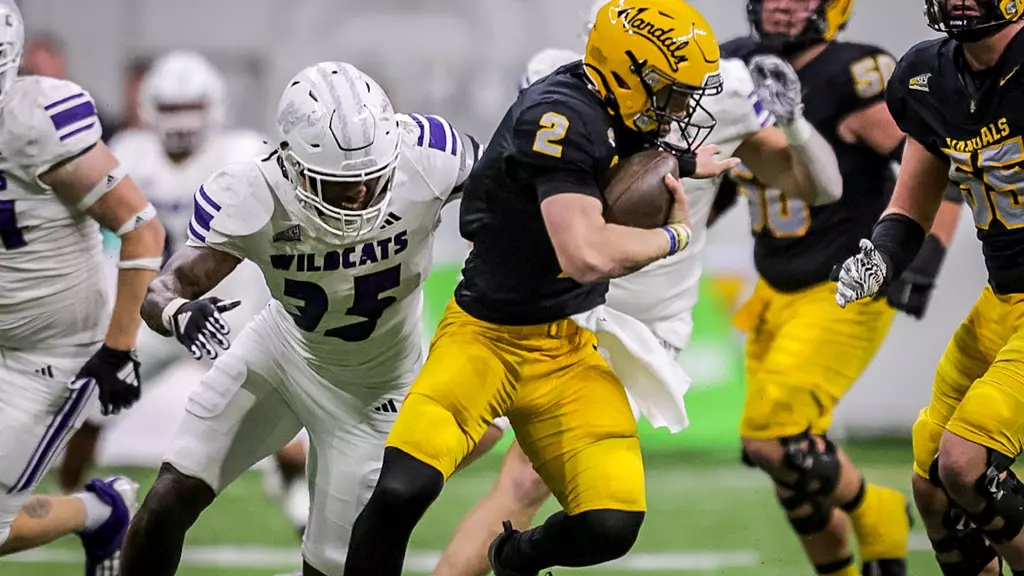Playing college football is a dream of millions of high school football players across the country. They dream of campus glory and running onto the field while the crowd is roaring and the band plays the fight song, but the odds of earning a college football scholarship aren’t in the players’ favor.
According to the NCAA, there is an average of 1.5 million high school football players playing every year and only 1% are offered positions on Division I teams in college.
But not receiving a scholarship to play doesn’t have to mean the end of an athletic career at the high school level. The NCAA reported that in 2018, 46% of all college athletes are walk-on players.
There are different types of walk-on players. A typical walk-on player must attend tryouts to earn a roster spot, but a preferred walk-on is guaranteed a spot on the roster at the start of camp.
Wildcat senior linebacker Conner Mortensen and Weber State football’s team leader in tackles during the 2019 and 2021 seasons didn’t have a scholarship offer when he decided to attend Weber State in the fall of 2015.

Mortensen is from Overton, Nevada, and wasn’t heavily recruited coming out of high school where he earned All-State Honors playing running back at Moapa Valley High school and set the Pirates’ school record for the most touchdowns in a single season.
While originally planning to walk-on at Southern Utah University, the coaching staff was no longer there after the Thunderbird football program cleaned house when he was on his mission for the Church of Jesus Christ of Latter-day Saints in the Dominican Republic.
“Coming out of high school, I was planning on walking on at SUU,” Mortensen said. “I hadn’t got a lot of looks from Weber, and they weren’t doing a ton of recruiting down where I was from in Southern Nevada.”
He got in contact with then Weber State linebackers coach Lance Hunsaker, who was in charge of walk-ons and tryouts through a friend on his mission.
“He just said there were spots available,” Mortensen said. “So I walked into the offices and told them I was there to walk on.”
The life of a walk-on player isn’t glamorous and working harder than everyone else is the expectation.
“You come in, and you really have no presence,” Mortensen said. “You start at the lowest of the low. No one knew my name. Nobody knew who I was.”
He didn’t even get team-issued gear to wear and bought his own from the bookstore.
“I couldn’t get a pair of shorts, a shirt or anything to go work out with the team,” Mortensen said.
After making the team, he first took the field in a Wildcat jersey at Utah State’s raucous Maverick Stadium.
“It was pretty cool — a crazy atmosphere to play in for my first game,” Mortensen said. “It was surreal. I didn’t have a lot of expectations as a walk-on.”
Like most walk-ons, he was excited to be part of the team, but improvement quickly followed.
Mortensen finished the 2017 season 17th on the team in tackles and also snagged an interception.
“It’s been stepping stones, but in my first start, we were playing Cal Poly, and I was being used like a safety to chase down the triple-option, and I just remember studying a ton of film and wanting to be ready for it,” Mortensen said. “I was able to go out there and make some plays.”
His dedication to the team paid off, and his improvement was noticed. Right before the kickoff of the Wildcats’ 2018 season at Rice-Eccles Stadium against the Utes, Mortensen was awarded a scholarship.
“I signed literally right before we got on the bus,” Mortensen said.
He’s gone from a walk-on to a pillar on the Wildcats’ championship defense, and has been a crucial contributor to WSU’s four-straight Big Sky Championships.
He led the team in 2019 with 104 total tackles, with 9.5 tackles at a loss, and also led the team this spring with 44 total tackles on the way to another conference championship.

“There were amazing linebackers who came before me. Guys like LeGrand Toia and Landon Stice,” Mortensen said of who helped him improve. “Guys that were just ballers that I was able to learn from.”
Toia and Stice finished WSU’s 2018 season first and second on the team in total tackles with 89 and 70.
A unique part of college athletics is the players that make up a team come from varying backgrounds and from different places all while having played different levels of football.
Freshman defensive end Tyler Williams was attending a game in the Ogden snow and taking in the purple Stewart Stadium atmosphere while cheering on his brother Jonah Williams, 2019’s Big Sky Defensive MVP and currently a Los Angeles Ram, during the 2019 FCS quarterfinals against Montana, when his journey as a Wildcat started.
“I went to my brother’s game, and the coaches started talking to me a little bit, and they offered me a walk-on spot,” Williams said.

Williams was a rugby player at Rocky Mountain High School in Meridian, Idaho, where he traveled the country competing with his high school club team Rocky Mountain Rugby and his travel team.
He hadn’t played football since his sophomore year of high school where he was a wide receiver.
“I was smaller, probably like 5’6″ and pretty light, so every time I played football, I was struggling with playing time,” Williams said. “So I just committed to rugby.”
Once at Weber, he thought he’d play linebacker, but because of his size he was moved to defensive end.
“I was pretty excited about the move and playing the same position as my brother,” Williams said. “I just hope I can make an impact.”
After tearing a ligament in his foot during a practice, he had to sit out and hasn’t appeared in a game yet, but he’s been cleared for the upcoming fall season.
Another Wildcat walk-on — freshman wide receiver Jeremy Wilcox — came to WSU after playing for Farmington High School.
As a preferred walk-on, he had established a relationship with the Wildcats’ offensive coordinator, Matt Hammer, before arriving at Weber State.
“My whole senior year, coach Hammer, he’d kept in touch with me, and that summer I’d went to all of Weber’s football camps,” Wilcox said.

During his junior and senior seasons for the Phoenixes, he hauled in 46 receptions and 10 touchdowns as wide receiver and rushed for two more scores.
“Coming in as a walk-on, I definitely have loved it and love being apart of the team,” Wilcox said. “You definitely have that feeling that you have to outwork the other guys that have come in on scholarship to get recognition and be noticed.”
While walk-ons like Williams and Wilcox are still working to rise in the ranks and haven’t seen game action, Mortensen’s success as a walk-on isn’t from talent, he says, but from simply putting in the work.
“What I’ve always tried to do, and what I feel like saved me and gave me the opportunity, was putting in the work off the field, in the weight room and in conditioning,” Mortensen advises other walk-ons. “And just being scrappy and giving my best effort.”
Mortensen’s experience as a walk-on allowed him to become one of the staples of a Weber State football program with championship expectations.
“For me, it’s been the perfect storm coming up that way, and I think that’s what’s really allowed me to become the player I am.”



















